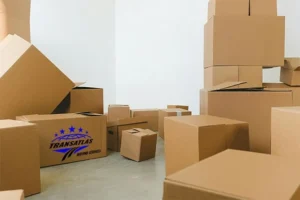Some of the most valuable and fragile products in any home are electronics. When relocating
to Canada, it is important to pack them well in order to avoid damage. Television, computers,
and gaming console devices are easy to shock, get wet, and even get cold. They are easily broken
or rendered out of use unless they are properly packed. With proper materials and methods, you can
ensure that your electronics remain intact at all times throughout your relocation.
Why Electronics Need Extra Care
Electronics are delicate and can be very costly to replace (unlike clothes or books). One fall or
bump during loading can break screens, wires or circuits. Winters in Canada are even more
dangerous, as low temperatures during the freezing periods can damage batteries and LCDs.
Good packing is a guarantee that your equipment gets to your destination in good working
condition, and it is also a way to avoid expensive post-move repairs or replacement.
Use Original Boxes if Available
Electronics should be packed in their original boxes as this is the safest method of packing.
These boxes are made to fit the items, and they come with foam or cardboard inserts that
cushion the items. Assuming that you haven’t thrown away the packaging of your TV, computer,
or printer, use it during your move. Otherwise, you should purchase special moving boxes or
durable options that would allow sufficient area to pack.

Wrap Devices for Protection
You should wrap your electronics with protective materials before putting them in boxes. Bubble
wrap is preferred on screens and glass surfaces, whereas anti-static bubble wrap is preferred on
circuit board items. Wraps should not be made with actual newspapers, as the ink can be left to
stain surfaces. With small devices such as routers, speakers or remotes, it is recommended to store
them in zip-lock bags to avoid dust and scratches.
Label Cords and Accessories
Electronics are usually shipped with numerous wires and a few accessories that may end up mixed
up. All cords can be disconnected and labelled with a tape or tag to prevent confusion in the future.
Keep them in different bags or small boxes and put them in the same box as the device. By doing
so, when you assemble your electronics in your new house, you are not wasting time trying to
determine which cord fits where.
Protect Against Cold and Moisture
Moisture and freezing weather are a big concern in Canada. The electronics must always be put in
plastic bags and then packed in a box to keep away condensation. Put silica gel packets in boxes
to keep the atmosphere dry. In cold weather, leave electronics at ambient temperatures for a
few hours before connecting them to an electrical outlet. This will avoid damage due to sudden
temperature changes.
Use Proper Labelling
Always put a label on boxes with electronics that says FRAGILE, and always put the label this side up.
Label the box with the name of the device so that movers know what is inside the box. Proper
labelling will allow movers to treat the boxes with care and will allow you to find the most
important devices in your new location quickly.
Final Thought
Electronics may be one of the hardest goods to transport, but when packed appropriately, they
can be carried safely. Original boxes, bubble wrap, moisture protection and proper labelling
can help minimise the risks. You will also save yourself from heartache and the avoidable
expenses incurred after relocating to Canada by taking a little more time to pack. Thus it will take
your equipment to your new house safely.
FAQs
Is it possible to use ordinary bubble wrap with electronics?
Yeah, but the anti-static bubble wrap is less harmful to items with circuit boards.
What can I do to guard my TV when moving?
You can use its original box or an exclusive TV box with foam padding.
Will it be better to transport electronics in my car rather than in the truck?
It is possible, you can transport electronics in the car as an added precaution, particularly during
winter.
Can we use electronics immediately after unloading in winter?
No, leave it for some hours, so that they can settle into room temperature.
